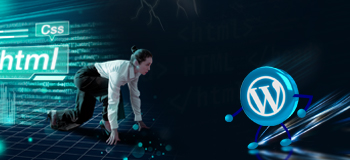Top Software Development Trends
to Dominate by 2022
- btle_admin
- February 9, 2022
- 11:21 am
- No Comments
Software development trends have changed quickly, but the current epidemic has accelerated them. Soon, what currently seems to be an acceptable approach in software development may no longer be. Indeed, none of us are Raven Baxter (a fictional character from a Disney Channel sitcom) who has visions that allow her to see into the future and predict what will happen.
Digitization will continue to accelerate in 2022, as it did in 2020. There is a greater focus on automating repetitive procedures, providing a multichannel customer experience, ensuring data privacy, and embracing new technologies across all industries.
We’ve all heard the statement “every company is a software company,” but scaling and building high-quality software is difficult. With tech stacks, software development complexity increases, constantly evolving, and new cloud services emerge. Meanwhile, the revolution in hybrid work and the epidemic of digital acceleration have blown the backlogs of software development teams across all industries. The last two setbacks may have been the death knell for conventional development.
As a result of this new reality, software engineering executives must revise their assumptions for 2022 and adapt their teams, procedures, and tools to address the four fundamental pillars of software engineering:
- Developer Experience: Simplifying technologies to enable teams to innovate more quickly.
- Development Workflow Automation: Platforms and tools from different lifecycle stages are integrated holistically, removing friction and handoffs.
- Compliance and Security: To make it easier to design secure code, developers move everything tested during development to the left and everything that should be tested afterward to the right.
- Operation and Deployment: Increasing service reliability and performance by focusing on user adoption.
Developing a digital solution requires business owners to be aware of future trends in the software industry and plan accordingly. Based on the pillars, business owners should consider the following significant software development trends for 2022 when designing a new product.
Current Software Development Trends
In this world, nothing remains the same. The enterprise web development sector and software development sectors will no longer be the same by 2022. ‘What’s so important?’ you would undoubtedly ask—maintaining or at least being aware of current trends in the basic approach. Let’s examine the current software technology developments that will have the most impact in 2022.
- The Rise of Web 3.0
How do you think the internet will evolve in the future? The answer can be found in the latest web development technologies. It’s Web Three, or Web 3.0, as it’s also known. With today’s rising technologies in web development, Web 3.0 will progress like previous versions – Web 1.0 and Web 2.0. The IT architecture is divided into three layers, as follows:
- Computation: The process of reasoning that enables interaction to take place.
- Interaction: The content, hardware, and software we use to communicate.
- Information: Data and structure are needed to complete computing functions precisely, efficiently, and securely.
This concept, the most highly discussed in today’s digital landscape, will lay the foundation for the future of the digital world. In this new era of internet development, decentralized control, facilitated by Blockchain, cryptocurrencies, and NFTs, is mechanized by intelligent contracts. Web 3.0 applications stand out due to their sophistication and interactivity. They go beyond the fundamental, static pages that dominated previous incarnations of the web.
Applications built with Web 3.0 are more dynamic and responsive since they are made with JavaScript. The hardware of modern computers can also be used to accelerate loading times. Web 3.0 applications are available for desktop browsers and high-end mobile devices like smartphones with OLED screens. The number of Web 3.0 applications will increase next year, and they will be compatible with all devices.
Individuals will own their data instead of relying on third parties such as Facebook, Google, and Apple to connect them, as Web 3.0 promises. While Web 2.0 isn’t going away ultimately, it isn’t going anywhere either.
Today’s central control points dominated by big tech will coexist with platforms like Ethereum that allow individuals to engage more directly and privately. Due to them, customers will conduct direct transactions and possess digital assets.
Meanwhile, Web 3.0 will employ artificial intelligence to link data, allowing for personalized online experiences and semantically correct and comprehensive search results. As a result, software developers working on online software will need to learn new technologies and programming languages like Solidity, an object-oriented language used to build intelligent contracts, notably on the Ethereum blockchain.
Advantages of Web 3.0
- One of the main benefits of Web 3.0 is its ability to access data from anywhere.
- With encryption security and complete ownership of their data, end users regain control over their data.
- Users will be able to create a blockchain without any permission. Due to this, anyone can address the blockchain network and interact with it.
- Low-Code/No-Code Solutions
In 2022, Software Development Outsourcing will implement Low-code or No-code Solutions. Low-code and no-code solutions are becoming increasingly popular in web development companies. It allows programmers to create applications without writing code. You can drag and drop different components to complete your application using a visual interface. Due to their ease of use, low-code and no-code solutions are popular among developers.
This success can be mainly attributed to the democratization of software development, which has allowed many people to take a concept and transform it into an actual product rather than a select few.
Some of the rising stars in low-code/no-code are:
- AWS Amplify Studio – generates and synchronizes React components from Figma files using a low-code app development tool.
- Airtable, which received $735 million in investment — Airtable announced its Series F funding on December 13th, 2021, to accelerate the adoption of connected applications and automate work processes.
- Webflow received $140 million in Series B funding to expand its workflows, memberships, and enhanced e-commerce. Fun fact: This website was created using Webflow!
- Amazon SageMaker Canvas is a no-code visual machine learning tool for business analysts.
No-code and low-code platforms exist solely to make it easier for developers to communicate with non-developers to focus on critical tasks. Lastly, these platforms are developed by developers and have code underlying them. In many cases, developers need to write custom code to add extra functionality that extends beyond the limits of a given platform.
Low-code or no-code solutions provide the following benefits:
- Low-code and no-code solutions offer a visual interface for creating software quicker.
- Choosing a language with a vast user base will save you money.
- Low-code and no-code solutions are easier to design because they use easy-to-learn code.
- Metaverses
Whether you deem these brands iconic, meme-worthy, cringe-worthy, or buzzworthy doesn’t matter. Currently, they are paving the way for a virtual world. A metaverse can be defined simply as a parallel universe alongside the physical universe.
The idea of living in a world where the rules aren’t strictly obeyed is not new. Games like Second Life, GTA, and others have already captured significant playing time. In the past, the purpose was to amuse ourselves: to have a good time and reset before returning to daily life.
Over the years, many things have changed. Meta aims to create a world where people can work, interact, and even attend a dance club. As far as Microsoft is concerned, the metaverse is a tool for collaborative work. Possible future worlds we’ll see could be the next phase in the growth of platform economies.
Regardless of the purpose of virtual worlds, they will undoubtedly take off next year. Two important events contributed to the race’s acceleration. The outbreak was the first of its kind. During this time, travel was difficult, dividing people; the world grew again after shrinking significantly in the previous 200 years. Second, Facebook was renamed Meta. Even though it is not the only corporation interested in creating a new universe, the move caused quite a stir worldwide. Metaverses have become more widely known to people previously unaware of them.
- Blockchain
There isn’t a single individual in that sector who doesn’t know what Blockchain is. The term “blockchain” is often used interchangeably with “bitcoin.” To begin with, let us take a closer look at Blockchain.
Blockchain (DLT) is a distributed ledger shared by every node in a network. It stores information electronically. Blockchains are crucial in cryptocurrency systems, such as Bitcoin, for maintaining secure and decentralized transaction records. By doing so, a data record is ensured to be accurate and fast while also fostering confidence without the involvement of a trusted third party.
On the other hand, the specialty has grown. Many reasons have led to Blockchain’s popularity among software developers, including smart contracts, logistics and supply chain security, and identity protection.
Blockchain is expected to set the trend in its own right by increasing the transparency and efficiency of corporate operations (Blockchain’s market share to date is 4.9 billion US dollars and will surpass 60 billion by 2026). This paperless technology utilizes a database model similar to this:
- Integration of traditional and distributed databases is traceable (to a degree) and can be stored as blocks with various levels of blockchain security.
- Businesses and organizations can generate massive value from such a model. There is no need to worry about manual data exchange (since automation has eliminated manual data exchange across multiple layers of blockchains), which can be performed anywhere, anytime.
This general-ledger technology is ideal if you are responsible for many technically flexible processes within an enterprise and are still trying to overcome the limitations of traditional databases that lack automation. It will provide you with a higher level of security, progressive innovation, lower transaction costs, and trouble-free payments (much faster than traditional financial institutions).
A blockchain’s benefits include:
- Ensure the security and dependability of your program.
- Create an impenetrable database that can’t be tampered with.
- Blockchain technology will allow companies that outsource software development to improve the security and reliability of their products.
- Internet of Things (IoT)
By 2022, it’s predicted that the Internet of Things (IoT) will generate more than $6 trillion in economic value. When IoT and cloud computing are combined, software development will be transformed. Sensors and analytics will enable real-time control so that mobile devices will become more specialized for vertical markets (such as healthcare or aerospace) in the future.
By 2025, 65 billion IoT devices are expected to be in use. Compared to 2018, that’s a 6x increase. It has been a top software trend for a long time, and given its popularity, IoT will remain a hot topic in the coming decade. Alexa is one technology that has already made its way into people’s homes, but its potential has yet to be realized.
The Internet of Things (IoT) is the collection of connected physical objects (things), such as smart wearable devices that can exchange data over the Internet. Using the Internet of Things (IoT), software development enables reliable, user-friendly, and secure solutions. Both developers and business owners have an array of possibilities. Market competitors can take advantage of this tendency to gain an edge over them.
With IoT and 5G networks having such a profound impact on our lives, we have a lot of work to do, at least in one area: security. The intelligent devices found in our homes and offices have made life easier and riskier. Whether in a workplace network or not, these devices have many applications, which means they impact many aspects of our lives. A breach in the tangled web of electronics could have catastrophic consequences.
IoT is being used for predictive maintenance of equipment and facilities, real-time tracking of vehicles and freight, real-time patient health monitoring, enhanced property security, and intelligent energy use in organizations. IoT implementation is likely to be most successful in the healthcare, logistics, public sector, manufacturing, hospitality, and other industries.
The Internet of Things market is booming. With each passing day, more and more gadgets are connected to the Internet and communicating. Thanks to the Internet of Things, you can start creating secure and reliable software for your company right now, thanks to the Internet of Things!
- Cyber Security – Secure Internet
Cybersecurity is another trend that will grow in 2022. There will be an increased focus on modernizing systems, applications, and technological stacks, as well as regular cybersecurity audits. A concept such as cyber security, or internet security, is not new. Keeping the Internet secure as the entire population migrates to the Internet is becoming increasingly important. Take into account how much you depend on the Internet for bank transactions, cloud storage, and communication.
Cybersecurity ensures that your personal and professional information is protected from hackers. If the current trend continues, the demand for cybersecurity for software and applications will skyrocket by 2025. Only developers who design custom applications and software for your business will be able to accomplish this.
- Artificial Intelligence (AI)
AI, a powerful, modern technology that makes AI tools a reality, is expected to reach $126 billion in the AI software industry by 2025. Whether deep learning, machine learning, or broader artificial intelligence applications, businesses increasingly use AI to disrupt their industries. The future of software development and technology depends on AI algorithms, big data, and advanced AI tools. These enable us to draw exciting conclusions about everything from retail to healthcare.
AI-driven development refers to the methods, strategies, and practices used to integrate AI into software applications and use AI tools to develop AI-enhanced solutions, such as augmented analytics, automated testing, automated code generation, and automated solution creation.
Home assistants that respond to voice commands, insight-as-a-service, and smartphones are a few examples. A consumer may benefit from AI by navigating online operations with ease, improving the customer experience. AI in transportation, economics, healthcare, and education is becoming more common.
Supply and demand chains reduce costs by anticipating stock levels and reordering deliveries with AI. Increasingly, machine learning is being used in manufacturing to monitor the condition of items and forecast when they will need repairs or maintenance. A great deal of development is expected in artificial intelligence (AI) and machine learning (ML).
Wrapping Up
Software development is experiencing many exciting trends that are evolving quickly. Keeping them in mind is crucial. All of these trends will contribute to software development’s success in 2022. They will be able to generate better items faster and more efficiently with the help of these trends.
Pandemic forces companies to rethink corporate structures and introduce new digital initiatives. The developer is at the forefront of every software trend, working around the clock to keep clients happy. If you need more information, contact a web development agency. An effective plan that is tailored to your particular needs will be devised.
Popular Categories
Newsletter
Get free tips and resources right in your inbox, along with 10,000+ others
Latest Post
 Digital Marketing Strategy
Digital Marketing Strategy 



